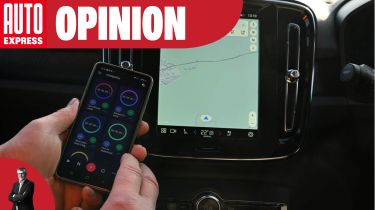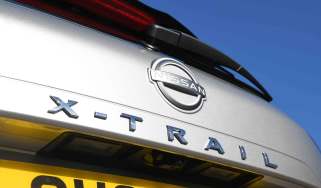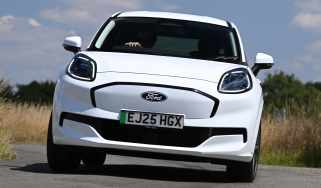Over-the-air software updates made car manufacturers lazy and drivers are paying the price
Editor Paul Barker thinks manufacturers are too reliant on post-launch car software updates to fix problems which should have been sorted out beforehand

There’s a new addition to my Reasons to Hate Car Tech list. Alongside the clumsy implementation of safety systems such as lane-keep assist, and the hypocrisy of phones being illegal to touch while driving – unless they’re in a phone holder – but the infotainment system’s touchscreen being almost impossible to use safely while also paying attention to the road, there’s one more.
I’ve a theory that it’s made car makers lazy about their development. Over-the-air updates are now the norm, and while it’s great that your car gets a handy little update while it’s parked outside your house overnight, it also feels like manufacturers aren’t so concerned about actually finishing their cars before launching them.
I’ve been chatting to a reader (thank you for the messages, Mr Jackson) who has had a few problems with his new Citroen e-C3. It’s a model we rate highly, but it seems that cars have landed with buyers without the remote-charging technology being functional. That includes the ability to defer charging to schedule your top-up to take advantage of cheaper electricity, if you’re on such a deal. Apparently we’re looking at late this year before that function is enabled, which is frustrating for early buyers that may have experienced what isn’t exactly a cutting-edge feature on other electric cars.
But this isn’t an isolated case. Volvo has reportedly been keeping prospective customers updated on its long-awaited EX90 SUV, a car that could potentially be delivered with no Apple CarPlay, the infotainment only available in the ‘dark’ mode designed for night-time driving, and with an infotainment system that drains around three per cent of the battery every day. All things that will be fixed in future over-the-air updates, if they’re not ironed out before the car’s eventual arrival with customers. And there are other examples from across the industry.
There are two ways to look at this. Manufacturers being able to make improvements to existing cars without waiting for a mid-life cycle refresh that only benefits future customers is great, because current drivers don’t have to buy a new car to get the latest tech. Alternatively, brands are getting lazier about how complete their vehicles are before sending them out to new homes.
The best buying advice would seem to be that you’re better off not buying a new car in the weeks or even months after it launches. Let other people desperate for the latest thing be the guinea pigs that car makers seem to sometimes be mistaking consumers for, and wait maybe six months for the major bugs to be ironed out before taking delivery of your new model. Either that, or manufacturers could actually get their cars to a fully working state before they start taking money from the public.
Did you know you can buy a used car with Auto Express? Choose from tens of thousands of cars with trusted dealers around the UK. Click here to buy used with Auto Express now...
Find a car with the experts




